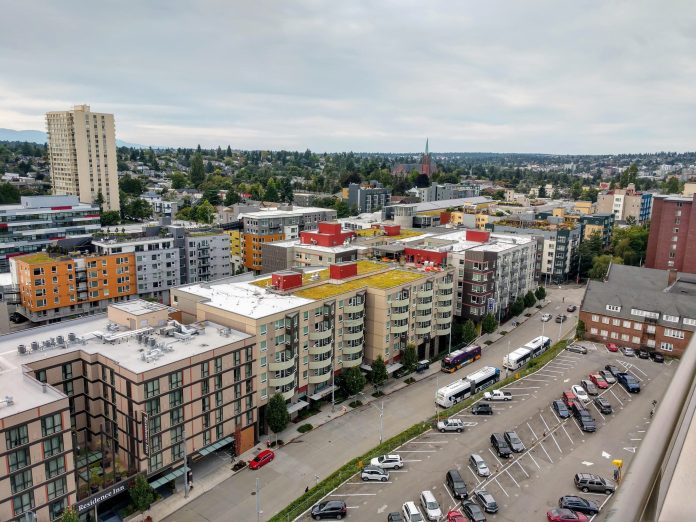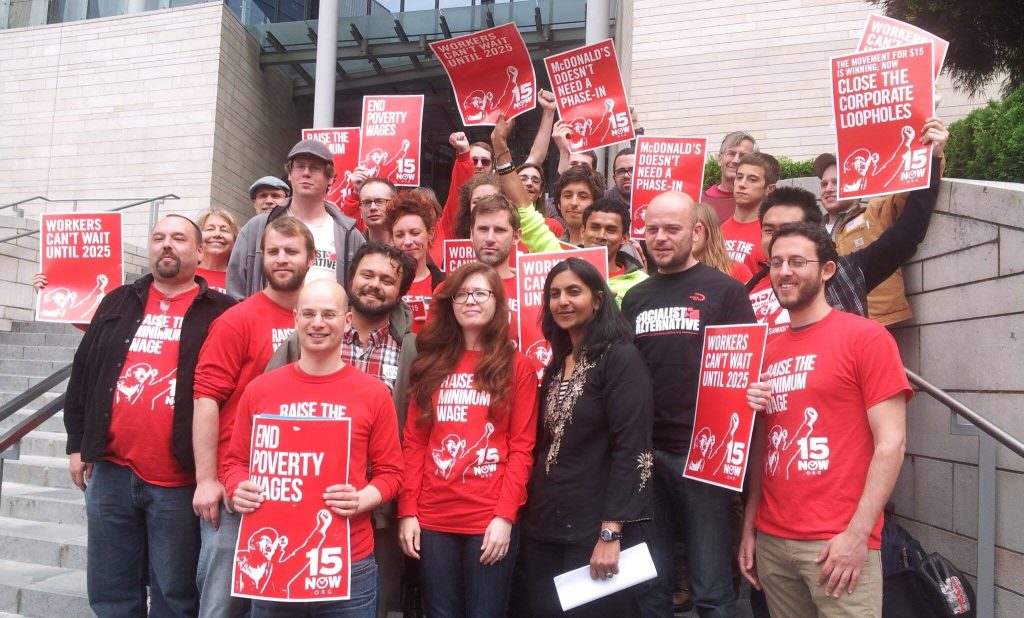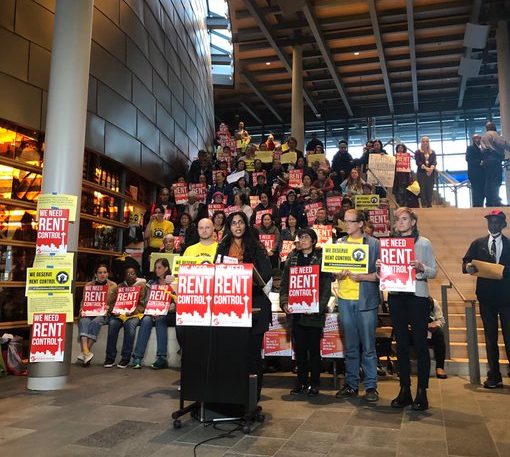
“If Sawant’s rent control bill went into effect, my apartment would get turned into a condo and I’d lose my place to live.”
“Developers won’t be able to make a profit so it will destroy new home construction.”
Those aren’t exact quotes, but I think it represents the tenor of some of the conversation around rent control without having to single anyone out. I’ve been reading reactions from folks in the urbanist-ish community locally to Councilmember Kshama Sawant’s rent control push, especially as her “opening” policy has finally been released. I’m concerned that as folks rush to analyze the policy they are forgetting the importance of politics. More importantly they are forgetting this is about people and emotions.
Let me take you back to another case where some members of Seattle’s community forgot about people and politics when reacting to a proposed policy change.
Similarities with Fight for 15
During Seattle’s “Fight for 15”, I remember folks being extremely critical of Sawant’s “radical” position. If you recall, she initially pushed to pass an immediate $15/hour wage for all employees of large businesses, only a three year phase in for small businesses and no tip or health care credits. What actually took effect was a pretty gradual phase-in. After four years of phase-in, workers for small businesses still haven’t reached $15/hour (if they’re a tipped worker or their employer contributes to healthcare). Workers at larger businesses only got to $15 last year! Because of the four-year delay, that $15 is also only $14 in 2015 dollars. In practice, a lot of small businesses have had to voluntarily match the large business mandated hourly rate to compete for labor.
Despite nearly apocalyptic predictions from many quarters, the local economy hasn’t fallen apart. Sawant got a lot of criticism for being “unrealistic”, but if she had been “realistic” and opened with a more gradual policy, what would have actually passed? Would we have a $15 wage or $12? Would we entirely have exempted “small” businesses from the higher wage? Would employers always be able to pay workers less if they contributed to health care or the worker was tipped?
But let me take you back to my personal emotion at the time because this is actually about emotions. At the time, I was working as a developer at Amazon, so I was in no way affected by a minimum wage change, nor was I worried restaurants or other businesses would get too expensive for me. But I had worked minimum wage jobs, especially in college and high school. Even at my jobs that weren’t technically minimum wage, my pay was set as a certain amount over the minimum wage. When Fight for 15 showed up, I was definitely in support. From a policy perspective, it was a no-brainer–an inflation adjusted minimum wage from the 50s and 60s would mean a $20 hourly wage–but also from a personal belief that people who work should be paid what it takes to live.

Of course, not everyone thought this. A lot of people focused on the dire predictions about how it would destroy the local economy. Many business owners said they’d have to decrease hours or let go of workers or raise prices (gasp!).
While I could acknowledge intellectually that those reactions were understandable, even if I disagreed with their predictions, what I heard them saying was:
- My theoretical future business profits are more important than people’s pain now.
- Families having stable and livable incomes is less important than my costs to operate not rising.
- My business isn’t actually profitable unless people are willing to work for unlivable low wages.
- I have a right to low business costs but people don’t have a right to live.
I know those read harsh and that no doubt most folks (then and now!) would deny that’s what they meant. But that is how I took a lot of public business owners’ statements at the time. There are still businesses I avoid because their owner said something that angered me during the $15/hour fight. Some of them have subsequently made statements that repair some of that, but most haven’t.
The problem for me is that when those folks, many of whom self-identify as “liberal” or “progressive,” saw a proposed change to improve the lives of actual people, their concerns were immediately about themselves and their status. Even though they were far better off than the workers getting $9.47 an hour or less than $20,000 a year full time (by comparison, the average new rental lease in 2014 was about $1,200 in Seattle). They often hid their focus on their own benefit with concern for workers–“might have to let people go”–but ultimately they were saying that their current business was unsustainable if they couldn’t continue to pay a sub-living wage.
Rent control politics
Why does this old fight matter now? Because I see that pattern repeating with rent control–only this time it’s not just business owners opposed. It’s many of us policy wonks and “urbanists,” many of whom are doing relatively well. Many folks seem to be unaware (or choose to forget) that Sawant’s opening play is always far more than she knows will ever pass. Given my admittedly shallow knowledge of state rent control law, I don’t think there is any policy we could pass in Seattle that won’t face an immediate legal challenge. So Sawant might as well go big since whatever actually takes effect (possibly years from now) will be watered down.

The point of the push now isn’t to have a workable final policy. The point is to get people thinking about and supporting what is right. And while I might disagree on how to get there, her position that a person’s housing costs shouldn’t go up more than about inflation is just. That’s what I have with a 30-year mortgage on a house. People who rent should have the same stability.
Another problem with the way we’re talking about this issue is that by focusing on the policy and nitpicking whether it’s “workable,” we are largely focusing on predicted harm and impact on those who are most powerful and wealthy, not those currently being harmed by rent hikes and economic evictions. Given that this policy will change, when we focus on its hypothetical harm of it, we give the impression that we care more about landlords and developers being able to “make a profit” by raising people’s rent by 10%, 20%, and even 50% a year. I don’t care if they can’t “make a profit” if they can’t do that. They don’t have a right to make a profit by destroying people’s lives.
Being forced to move quickly, often due to unsustainable rent increases, sidetracks people’s lives. Kids are forced to change schools mid-year. Parents are forced into longer commutes. Families are made homeless. Economic instability can ultimately kill either indirectly from stress-related health impacts over time or even directly when a stressed and depressed person tragically decides killing themselves or a partner is the only way out.
Sorry to be a downer. But that is what we’re not focusing on when we get all nitpicky about a policy that everyone knows is not the last word but merely an opening negotiating point. To someone who has been forced out of home after home, that is willing to take all kinds of crap from their landlord to make sure they don’t get kicked out, to someone working a job they hate because they can’t really risk losing it and their home … we look uncaring. Those people are hurting now. Many have been hurting for a long time. When we focus only on how landlords won’t be able to turn a profit with the proposed policy or developers won’t want to build housing, we’re saying to all those folks willing to show up to Sawant’s hearing this week: your pain is not important.
Now is the time for folks to support some kind of policy that makes it possible for folks making $30,000 per year and $60,000 per year to live in the city. There aren’t a lot of folks pushing much in this area and I appreciate Sawant starting with something when no one else is. We need to show that we really believe everyone has a right to live in the city, not just the people who can bounce back from 10% rent increases year after year. We need to care more about people than entrenched systems – that we can change.
It’s our fall subscriber drive. Please consider a donation.
